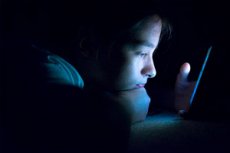
由于褪黑激素分泌较晚,且晚上警觉性增强,青少年常常难以在规定的时间入睡,无法达到每晚建议的 8 至 10 小时睡眠时间。
青春期,日益增长的学业要求、丰富的活动、对父母的独立性以及与同龄人的关系开始影响睡眠。然而,在研究青少年睡眠时,社会环境的作用常常被忽视。现在,来自瑞典和澳大利亚的研究人员研究了同龄人中的受欢迎程度如何影响14至18岁青少年的睡眠习惯。
该研究发表在《睡眠前沿》杂志上。
“我们发现,受欢迎的青少年睡眠时间较短。尤其是受欢迎的女孩,而非受欢迎的男孩,报告的失眠症状更多,”厄勒布鲁大学睡眠研究员、论文第一作者塞雷娜·巴杜科博士说道。“最有趣的是,无论智能手机问世前后,受欢迎程度似乎都会对睡眠产生负面影响。”
受欢迎与睡眠不足 研究人员对1300多名瑞典青少年(其中近一半为女孩)进行了抽样调查,以探究受欢迎程度是否与较短的睡眠时间相关。他们要求青少年提名最多三位朋友,提名最多的人被认为更受欢迎。这些青少年的睡眠时间比同龄人少,其中最受欢迎的青少年睡眠时间最多少27分钟。
当研究人员分别观察男孩和女孩时,他们还发现受欢迎程度与失眠症状之间存在关联:更受欢迎的女孩会经历更多的失眠症状,例如难以入睡或难以保持睡眠,或者醒得太早。而受欢迎的男孩则不会出现同样程度的失眠症状。
这些性别差异尚未完全明了,但男孩和女孩表现出不同的友谊行为或许能提供一些解释。“女孩比男孩对朋友表达更多的关心和关注,也更乐于助人。这可能意味着她们在睡觉时也会带着这些担忧,”巴杜科解释道。
手机或许无法解释流行与睡眠之间的关联。“我们还发现,无论是在便携式通信技术兴起之前还是之后,流行都与睡眠质量下降有关,”Badukko说道。这表明,导致流行青少年睡眠减少的原因可能并非智能手机;相反,其他机制可能在起作用。
研究人员认为,拥有更多朋友可能意味着与他们共度更多时间,这可能会导致睡眠时间减少。更多的情感投入也可能导致睡眠困难。这两种解释都适用于智能手机普及前后的时期。然而,研究人员表示,这需要详细的研究。
睡眠不足累积 “青少年可能是一生中睡眠最匮乏的群体,”巴杜科说。“之前的研究表明,额外30分钟的睡眠可以改善心理健康,提高学习成绩。”
由于开学时间较早,许多青少年试图在周末补觉——这种策略可能会适得其反。“假设一个青少年周日睡到下午1点。第二天晚上想睡个好觉去上学会很困难,因为他们不会感到疲倦,”巴杜科说。“过度推迟起床时间会加剧他们一周内积累的睡眠不足问题。”
研究人员认为,现有的改善青少年睡眠的干预措施中,讨论睡眠的社会规范和同伴对就寝时间的期望是一个缺失的部分。此外,还需要进一步研究,以探究社会联系与睡眠之间的关系,并阐明其中发现的性别差异。

